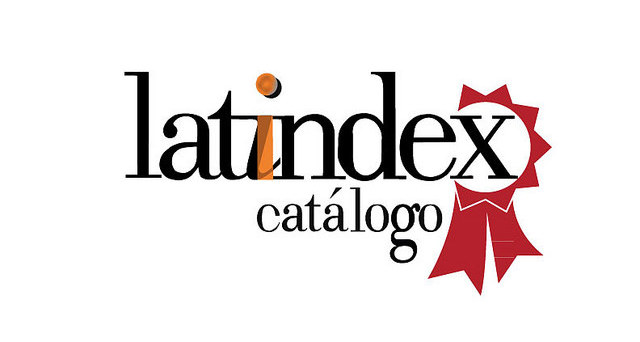Presentation of the dossier
DOI:
https://doi.org/10.29340/en.v2n3.109Keywords:
dossier presentation, resist, dehumanization, MexicoAbstract
Mothers who search for traces of their children in vacant lots. Journalists who have nightmares in which they are executed by high-powered weapons. Young people who testify for the recognition of forced disappearances in Mexico before international actors. Human rights activists who keep track of the invisible victims of the so-called war on drugs, i.e. displaced persons. These themes make up the four texts in this dossier, which were written by women who move between academia and activism. They expose the dehumanization of militarist discourse and actions, illuminate the meanings of those who suffer and resist such circumstances, and show the cruel way in which Mexican society has been hit by the militarization of public security.
Downloads
References
Comisión Nacional de Derechos Humanos (2016). “Informe especial sobre Desplazamiento forzado Interno (DFI) en México”. Recuperado de http: //www.cndh.org.mx/sites/all/doc/Informes/Especiales/2016_IE_Desplazados.pdf, consultado el 10 de agosto de 2017.
Durin, Séverine (2018). “Víctimas sospechosas. Desplazamiento forzado, daño moral y testimonio”, Ponencia presentada en el VI Congreso Nacional de Ciencias Sociales Las ciencias sociales y la agenda nacional organizado por el Consejo Mexicano de Ciencias Sociales, A.C, la Universidad Autónoma de San Luis Potosí y El Colegio de San Luis, A.C. Centro Cultural Universitario Bicentenario, San Luis Potosí, SLP, del 19 al 23 de marzo de 2018.
Eiss, Paul K. (2014). “The narcomedia. A reader’s guide”. Latin American Perspectives, Issue 195, vol. 41, núm. 2, , pp. 78-98. DOI: https://doi.org/10.1177/0094582X14521388
Galtung, Johan (1990). “Cultural violence”. Journal of Peace Research, vol. 27, núm. 3, pp. 291-305. DOI: https://doi.org/10.1177/0022343390027003005
INEGI (2018). Estadísticas de mortalidad. Defunciones por homicidio. Recuperado de https://www.inegi.org.mx/sistemas/olap/proyectos/bd/continuas/mortalidad/defuncioneshom.asp?s=est, consultado el 19 de diciembre de 2018.
Kaldor, Mary (2001) Las nuevas guerras. Violencia organizada en la era de la global. Barcelona: Tusquets.
La Jornada (2007). Claudia Herrera y Ernesto Martínez, “Vestido de militar, Calderón rinde ‘tributo’ a las fuerzas armadas”, 3 de enero.. Recuperado de http://www.jornada.unam.mx/2007/01/04/index.php?section=politica&article=003n1pol, consultado el 17 de octubre de 2016.
Levi, Primo (1987). Si c’est un homme. París: Juliard.
Mbembe, Achille (2012). “Necropolítica, una revisión crítica2”, en Helena Chávez Mac Gregor (curadora académica). Estética y violencia: necropolítica, militarización y vidas lloradas. México: Museo Universitario de Arte Contemporáneo, pp. 130-139.
Nahoum-Grappe, Véronique (2002). “Anthropologie de la violence extrême: le crime de profanation”. Revue internationale des sciences sociales. núm. 174. pp. 601-609 . DOI: https://doi.org/10.3917/riss.174.0601
Paley, Dawn (2012). “El capitalismo narco”. Recuperado de https://dawnpaley.ca/2012/08/20/el-capitalismo-narco/, consultado el 25 de octubre de 2016.
Reguillo, Rosana (2012). “De las violencias: caligrafía y gramática del horror”. Desacatos, núm. 40, septiembre-diciembre de 2012, pp. 33-46. DOI: https://doi.org/10.29340/40.254
Reporteros sin Fronteras (2018). “Clasificación. Los datos de la clasificación de la libertad de prensa 2018”. Recuperado de https://rsf.org/es/datos-clasificacion, consultado el 19 de diciembre de 2018.
Sémelin, Jacques (2013). Purificar y destruir. Usos políticos de las masacres y genocidios. Buenos Aires: USAM EDITA Universidad Nacional de General de San Martín.
Valenzuela, José Manuel (coord.) (2015). Juvenecidio. Ayotzinapa y las vidas precarias en América Latina y España. México: Ned Ediciones/ITESO/El Colef.
Downloads
Published
Issue
Section
License
Copyright (c) 2019 Encartes Antropológicos

This work is licensed under a Creative Commons Attribution-NonCommercial 4.0 International License.
Aviso de derechos de autor
- Los autores/as conservan los derechos de autor y ceden a la revista el derecho a la primera publicación con el trabajo registrado con la licencia de atribución Creative Commons, que permite a terceros utilizar lo publicado siempre que mencionen la autoría del trabajo y a la primera publicación en esta revista
- Los autores/as pueden realizar otros acuerdos contractuales independientes y adicionales para la distribución no exclusiva de la versión del artículo publicado en esta revista (por ej. Incluirlo en un repositorio institucional o publicarlo en un libro) siempre que indiquen claramente que el trabajo se publicó por primera vez en esta revista.
El material puede ser copiado, distribuido, comunicado, ejecutado públicamente. Se pueden hacer obras derivadas de él. No se puede utilizar para fines comerciales. Se debe reconocer y citar la obra de la forma en que tú especifiques.










